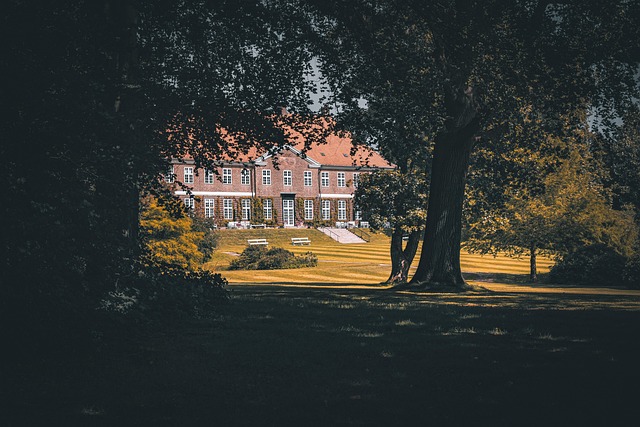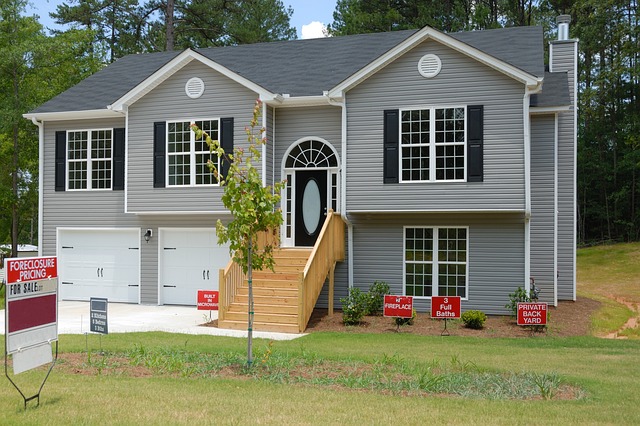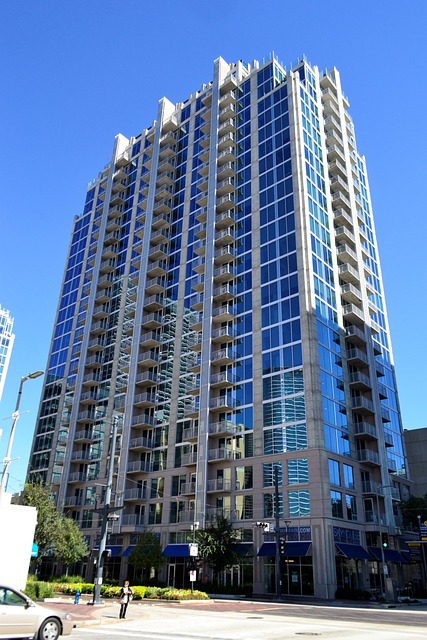Property and Casualty (P&C) insurance offers comprehensive protection for commercial buildings against various losses, combining property and liability coverage. It safeguards investments by addressing risks from natural disasters to legal liabilities. Tailored policies include structural damage, business interruption, liability, and asset protection. Risk assessment determines premiums, with customizable options ensuring specific concerns are addressed. Understanding the claim process and choosing a reliable provider are crucial for effective risk management in commercial property ownership.
In today’s competitive business landscape, securing comprehensive Property and Casualty Insurance for commercial buildings is non-negotiable. This article guides you through the intricacies of property insurance for commercial properties, empowering you to make informed decisions. We’ll explore why such coverage is vital, dissect key components, and uncover factors influencing premiums. Learn about various policy types, deductibles’ role, the claims process, and how to enhance protection. Discover the steps to choose the perfect insurer for your commercial assets.
Understanding Property and Casualty Insurance

Property and Casualty (P&C) insurance is a cornerstone of risk management for commercial buildings, offering protection against a wide range of potential losses. This type of insurance combines two key components: property insurance, which covers physical damage or loss to the building itself, and casualty insurance, which protects against liability claims and various business interruptions. For commercial properties, this could include protection from fire, theft, vandalism, natural disasters, as well as legal liabilities arising from accidents on premises.
Commercial P&C insurance is tailored to meet the unique needs of businesses operating in diverse sectors. It enables property owners and managers to safeguard their investments, ensuring financial stability in the face of unforeseen events. By understanding the specific risks associated with their buildings and operations, businesses can select coverage options that align precisely with their requirements, whether it’s comprehensive general liability for customer injuries or specialized coverages for high-value assets or business equipment.
Why Commercial Buildings Need Comprehensive Coverage

Commercial buildings, due to their intricate nature and significant value, necessitate comprehensive property insurance coverage. These structures often house a variety of businesses, each with unique risks and liabilities. A single incident, such as a fire or severe weather event, can cause substantial damage, not just to the physical structure but also to essential business assets like equipment, inventory, and data. Property and Casualty Insurance for Commercial Buildings provides a robust safety net by covering these potential losses.
Moreover, commercial properties often have complex legal and financial obligations. They may be subject to liability claims from customers, employees, or visitors who sustain injuries on the premises. Comprehensive coverage can protect against these claims, ensuring business continuity and financial stability. Effective Property and Casualty Insurance for Commercial Buildings is not just about protecting brick-and-mortar; it’s about safeguarding the future of the business and its stakeholders.
Key Components of High-Quality Property Insurance Policies

High-quality property insurance policies for commercial buildings encompass several critical components designed to offer comprehensive protection against potential risks. Firstly, they include coverage for structural damage caused by perils such as fire, storms, and natural disasters. This ensures that the physical integrity of the building is preserved, protecting a significant investment. Additionally, these policies often feature business interruption clauses that compensate for lost revenue during periods when the property is uninhabitable due to insured events.
Another essential aspect is liability coverage, which shields owners from financial loss arising from accidents or injuries on their premises. This includes legal fees and damages awarded in lawsuits. Property and casualty insurance for commercial buildings also frequently includes provisions for extra expenses incurred during the restoration period, ensuring business continuity. Furthermore, some policies offer specific coverages for valuable possessions within the building, such as fixtures, equipment, and inventory, providing peace of mind for business owners.
Assessing Risk: Factors Influencing Your Policy Premium

When it comes to property insurance, especially for commercial buildings, assessing risk is a critical step in determining your policy premium. Several factors influence this assessment, ensuring that the coverage provided accurately reflects the potential risks associated with the property. Key considerations include the building’s age and structural integrity, location and surrounding environment (like flood zones or high crime areas), construction materials used, and the purpose of the structure—all these elements play a part in establishing the level of risk for both the insurer and the insured.
For instance, older commercial buildings might require higher premiums due to potential outdated electrical systems or structural vulnerabilities. Similarly, properties in areas prone to natural disasters like hurricanes or earthquakes will have elevated risk profiles, leading to more expensive insurance policies. Property and casualty insurance for commercial buildings aims to mitigate these risks by offering tailored coverage options that address specific concerns, ensuring businesses are protected against financial losses should unforeseen events occur.
Types of Coverage: Protecting Your Investment Thoroughly

When it comes to property insurance, understanding the different types of coverage available is crucial for safeguarding your investment in commercial buildings. Property and Casualty Insurance (P&C) is a comprehensive solution designed to protect against potential risks and losses. This includes both physical damage to the structure and valuable assets inside, as well as liability protection against claims from third parties.
Commercial property insurance typically covers various perils such as fire, vandalism, theft, natural disasters like floods or earthquakes, and even business interruption caused by a covered event. Additionally, P&C policies often include casualty coverage, which protects against liabilities arising from accidents on the premises, employee injuries, or damage to others’ property. Customizable options allow businesses to tailor their insurance plans to specific needs, ensuring that every aspect of their commercial building and operations is adequately secured.
The Role of Deductibles in Property Insurance

In the realm of property and casualty insurance for commercial buildings, deductibles play a pivotal role in risk management and cost containment. Deductibles are the amount an insured party agrees to pay out-of-pocket before their insurance coverage kicks in. This self-insured retention acts as a financial cushion against potential losses, with higher deductibles often correlating to lower overall policy premiums. By accepting a higher deductible, businesses can significantly reduce their insurance costs, making it an attractive option for those looking to optimize their budget.
However, the decision to opt for a higher deductible should be strategic. Lowering the deductible may provide greater financial protection against unexpected events or minor incidents that could otherwise accumulate into substantial claims. For commercial properties, balancing these considerations is crucial. Policies with moderate deductibles offer a safety net while keeping premiums manageable, ensuring businesses are protected without undue financial strain.
Claim Process: What to Expect and How to Navigate It

When it comes to property and casualty insurance for commercial buildings, understanding the claim process is essential. The journey to recovery after a loss or damage can be confusing, but with the right preparation and knowledge, business owners can navigate this process smoothly. Typically, filing a claim involves several steps. First, you’ll need to assess the extent of the damage and gather relevant information and documentation. This includes taking photos, creating an inventory of damaged or lost items, and obtaining estimates for repairs or replacement costs.
Next, contact your insurance provider promptly to report the incident. They will assign a claims adjuster who will guide you through the process, inspect the property, and help determine the coverage applicable to your policy. It’s crucial to maintain open communication throughout, providing all requested information accurately and timely. This ensures a faster settlement and minimizes potential delays or disputes. Remember, knowledge is power, so stay informed about your rights and responsibilities as a policyholder.
Enhancing Your Protection: Add-on Coverages and Amendments

When it comes to protecting your commercial property, standard policies often leave gaps that can be detrimental. This is where add-on coverages and amendments come into play, offering tailored solutions for specific risks associated with your building and business operations. For instance, Property and Casualty Insurance for Commercial Buildings can include enhancements like extended coverage for valuable assets, such as equipment or inventory, which might be essential for businesses with significant physical resources.
Furthermore, these add-ons can provide additional protection during periods of construction or renovation, ensuring that your property is secured against potential risks not covered by regular policies. Customizable amendments cater to unique business needs, whether it’s liability coverage for specific events or protection against environmental hazards. Such personalized additions are key to ensuring comprehensive security and peace of mind for commercial building owners.
Choosing the Right Insurance Provider for Your Commercial Property

Choosing the right property insurance provider is a crucial step in safeguarding your commercial investment. When selecting coverage for your business, delve into several factors to ensure optimal protection. Look for insurers specializing in property and casualty insurance for commercial buildings, as they offer tailored policies designed to meet specific business needs. These experts will assess the unique risks associated with your asset, including location, construction type, and potential hazards, to craft a comprehensive plan.
Reputation, financial stability, and personalized service are key indicators of a reliable provider. Research their history, customer reviews, and claims handling processes. Top-tier insurers provide transparent communication, flexible policies, and prompt support during claims. They also offer various add-on coverages to protect against specific risks like natural disasters, theft, or business interruption—ensuring your commercial property is secure in every aspect.
